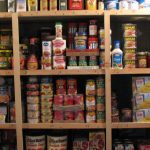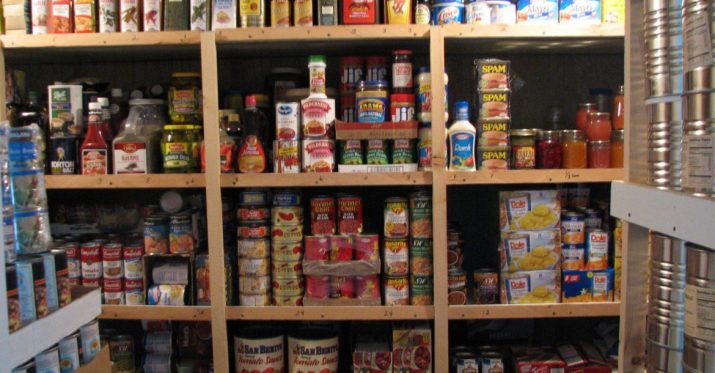
Smart prepper tips: Stock up wisely for any situation
Thursday, August 22, 2024 by HRS Editors
http://www.naturalnewstips.com/2024-08-22-smart-prepper-tips-stock-up-any-situation.html

Do you have enough food supplies in your stockpile? If you’re unsure, start prepping now so you have enough food for your family when SHTF and it’s time to bug in.
Narrow down your list by focusing on basic high-calorie grains, legumes and dried vegetables, along with other kitchen staples that are difficult to produce at home or in your home garden. (h/t to TheProvidentPrepper.org)
What to stock up on before SHTF
Here are some survival foods you need in your survival cache if things go south.
Note that the storage foods on this list meet one or more of the following criteria:
- Require no special tools, such as a wheat grinder.
- Only requires cooking.
- Contains essential nutrients or are calorically dense
- With a 25- to 30-year storage life.
- Are difficult, or almost impossible, to produce on your homestead.
Package your food supplies in containers appropriate for long-term storage such as #10 cans, or Mylar bags inside of sturdy plastic buckets.
Lastly, don’t forget to stock up on enough clean drinking water for the whole family. You have enough for drinking, cooking, cleaning and maintaining proper hygiene.
Grains
Grains will provide essential nutrients and calories while your family follows a survival diet.
Additionally, stocking up on different grains will diversify the nutrients in your diet. Remember that some grains are easier to prepare than others.
Many grains can be soaked, cooked and eaten without grinding into flour. If you own a grain mill, your menu potential can now include bread and tortillas.
Some grains, such as barley, corn, rye, spelt and wheat, can also be sprouted to increase nutrition and make them edible even without cooking.
Oats are one of the world’s most widely known superfoods. Having a bowl of oatmeal for breakfast can help you feel full longer, which is a great asset when food is, unfortunately, being rationed during a survival scenario.
Rolled oats are also easy to prepare and can be eaten without cooking by soaking in water or milk and some fruits overnight. (Related: Survival essentials: Best budget-friendly foods for prepping.)
Beans and legumes
Dry beans and legumes are crucial to follow a balanced survival diet.
Beans contain complex carbohydrates, fiber and protein, making them a powerhouse of nutrients.
Combine beans with a grain like rice so they can provide your body with all the essential amino acids and form a complete protein. Beans are easy to prepare and require only soaking and cooking, along with a dash of salt to make them edible.
Like grains, sprouting beans increases some nutrients. A study on the effects of sprouting kidney beans showed that there was an increase in vitamin C of 81.56 percent, niacin 13.47 percent, riboflavin 11.2 percent, thiamin 6.63 percent, vitamin B6 2.02 percent, protein 1.7 percent and folate 1.4 percent.
Stockpile different beans to diversify the diet and the nutrients in your survival meal plan. Aside from being a good source of calories, fiber and protein, each type of bean has unique vitamins and minerals.
For example, black beans are rich in folate (vitamin B9), manganese, magnesium, thiamine (vitamin B1) and iron. Meanwhile, chickpeas are full of folate (vitamin B9), manganese, copper and iron.
Lentils cook quickly and are a natural source of copper, folate (vitamin B9), manganese and thiamine (vitamin B1).
If you’re undecided about how much beans to stockpile, some preppers recommend storing at least 60 to 75 pounds of beans per person per year.
One #10 can of beans weighs about five pounds, and the average adult would require 12 to 15 #10 cans of beans for one year.
Dehydrated and freeze-dried vegetables
Having a variety of vegetables is ideal, but stocking up on dehydrated and freeze-dried vegetables means you have one less thing to worry about because they will last longer than fresh produce.
Where to get lab-verified beans, legumes and freeze-dried vegetables for your stockpile
The Health Ranger Store is committed to helping you prepare for any emergency as you start your survival stockpile.
That’s why we’re proud to introduce the Ranger Bucket Set, Freeze Dried Organic Peas (16oz, #10 can) 454g (2-Pack) and Freeze-Dried Organic Chopped Kale 4.58 oz (130g) (10# CAN) (2-Pack).
The Ranger Bucket Organic Emergency Storable Food Supply is considered the world’s first supply that’s certified organic and laboratory-verified. All the food items are organic, non-GMO, laboratory tested for heavy metals and completely free of chemical ingredients such as MSG or preservatives.
Each bucket contains grains such as Organic Long Grain Brown Rice, Organic Red Lentils and Organic White Quinoa. These buckets can be stored for up to 10 to 15 years, depending on storage conditions.
Freeze Dried Organic Peas (16oz, #10 can) 454g (2-Pack) are grown in the U.S. under strict organic standards. The freeze-drying method preserves the taste, texture and nutrients of peas better than any other food preservation method ever invented.
To ensure the longevity of storage and safety of our Freeze Dried Organic Peas, we enclose the product inside Ziploc storage bags and place them inside our #10 cans.
The Ziploc bags are BPA-free, made for food-grade products and have an exceptionally long shelf life.
The Health Ranger Store wants you to enjoy the full nutritional benefits of fresh organic kale, which is why we’ve gone to great lengths to bring you clean and certified Health Ranger Select Freeze-Dried Organic Chopped Kale in long-term storable #10 cans. Loaded with a variety of important nutrients, our premium chopped kale is carefully grown by our trusted suppliers under strict organic standards.
Available in convenient #10 cans, Health Ranger Select Freeze-Dried Organic Chopped Kale contains no gluten or GMOs and is lab-tested for glyphosate, heavy metals and microbes. It is also non-China and has been certified Kosher and organic.
Visit FoodSupply.news for more tips on how to build your food stockpile before SHTF. You can also check out Health Ranger Store and Brighteon Store for cleaner food supplies for your prepping needs.
Click on this link for more useful tips about bucket food storage.
Watch the video below to learn more about how Organic Brown Flaxseed can boost your intake of omega-3s and other essential nutrients.
This video is from the Health Ranger Store channel on Brighteon.com.
More related stories:
Backyard prepping: Surprising ways to supercharge your garden using household items.
Prepping tips: Stockpiling non-perishable foods and water.
Creating a bug-out plan: Essential steps for emergency evacuation.
Sources include:
Tagged Under: Tags: emergency food, emergency preparedness, emergency stockpile, food freedom, Food storage, food supply, freeze-dried foods, goodfood, goodhealth, homesteading, how-to, nutrients, off grid, preparedness, prepper, prepper pantry, prepping, prepping stockpile, SHTF, survival, survival stockpile, tips
RECENT ARTICLES


Prepping 101: 4 Essential tips for new preppers
By HRS Editors

Essential skills for urban prepping: How to prepare for emergencies in a city environment
By HRS Editors

The importance of mental resilience in crisis situations: Strategies for staying calm when SHTF
By HRS Editors

Community preparedness: Building networks for support and resources
By HRS Editors
COPYRIGHT © 2017 NATURAL NEWS TIPS


